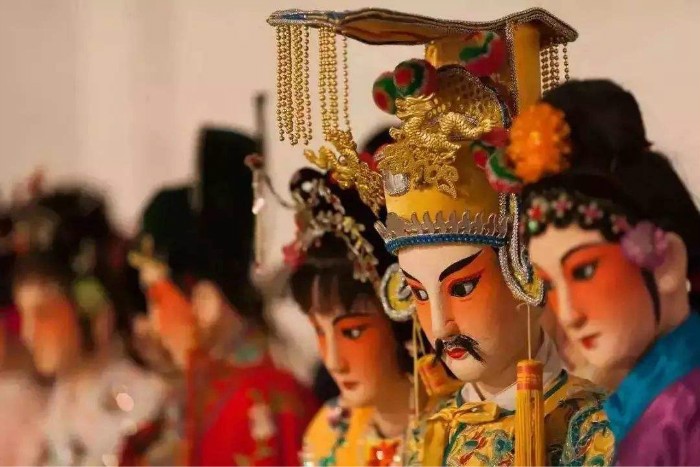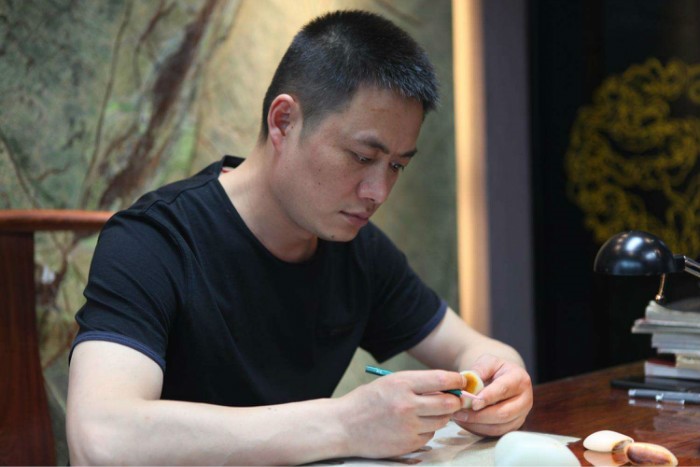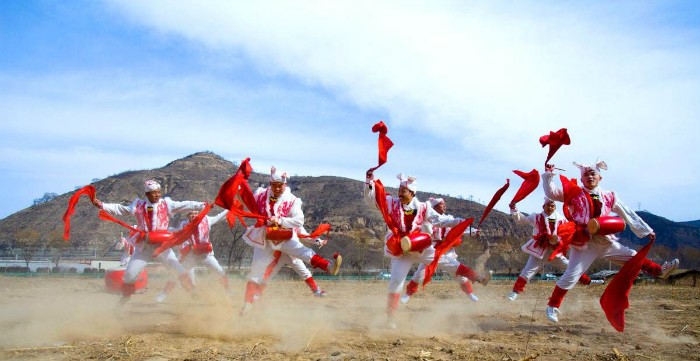Nanyin is one of the oldest extant musical genres in China, Read More
Legend of Chinese Valentine’s Day, Traditional Love Story
Look up at the sky today and you will find romance in the deep blue. According to the celestial phenomena, the ancient Chinese people created this love story, and the earliest records of this fairy tale date back 2,600 years. Read More
Chinese Shadow Puppetry, Shadows of Leather
Shadow puppetry, or Shadow Play, was very popular during the Tang and Read More
Chinese Folk Toys, An Indispensable Part of Traditional Folk Art
As an indispensable part of traditional folk art, toys are a unique expression of the long and uninterrupted Chinese history. Religious beliefs, world view, taste, classical works and local customs, especially festivals and the ‘Four Great Classical Chinese Literatures’, are all represented by the use of various techniques requiring an artisans’ deepest wisdom and creativity. The advantage is that the greater majority of people can enjoy the pleasure of toys that are easier to make and more widely available than other artistic works such as jade or silver wares, as they tend to utilize common articles that are readily available, such as cloth, grass, straw, clay, paper, and so on. Even so, it should be noted that these toys are not of a coarse manufacture, but of rustic simplicity and vivacity.
Generally, the diverse variety of folk toys can act as decorations to be appreciated or as knickknacks to be played with. As such, the two categories are those for festival decoration and those for daily enjoyment.
Chinese Folk Toys Those during festivals are quite flowery and customary. In the Chinese New Year, people use firecrackers and fireworks; in the Lantern Festival, there are lanterns in the shape of lotus, monkeys, dragons, etc; in the Pure Brightness kites will be flown in the blue sky; and during the Dragon Boat Festival, people will take sachet with them. Old people’s sachet looks like a peach, symbolizing longevity while children’s sachets are of lovely patterns, with fragrant herbs inside to ward off evil spirits. In ancient times, they were also a token of love that a girl would give to her beloved.

88-year-old Wood Engraver Carves Name in History Books
Chen Yiwen, who celebrates his 88th birthday on Monday, is the only living artist in hubei province with a high level of artistic achievement in wooded New Year paintings.
Chen is a national inheritor of the laohekou woodcut New Year paintings, which originated in the mid-ming dynasty (1368-1644) and flourished during the qianlong reign of the qing dynasty (1644-1911).
The whole process of woodblock printing mainly includes the following steps: material selection, sketching, woodblock printing, printing, coloring, drying. The subject of the painting includes ancient history or legendary figures, door gods, etc.
Chen’s works are bright in color and meticulous in line, and still retain the original local characteristics and folk flavor. One of Chen’s wooded New Year paintings was selected as an art textbook for middle school students in hubei province, and his works have been exhibited all over the country, as well as in Russia and Italy.
Chen began to learn handicraft at the age of 14 and started to create by herself at the age of 16. From Chen’s grandfather to his father, the technique has been passed down through the family, and now Chen’s grandson has inherited the craft.
During the flourishing period of New Year paintings, people still kept the tradition of sticking New Year paintings at home. There were still no machines to replace the handwork.
But now, few people still use hand-carved wood paintings, and Chen says the technology is disappearing.
To better inherit the technology, Chen has opened training classes, which are attended by about 30 students a year.
In 2011, Laohekou woodcut New Year paintings were included in the national intangible cultural heritage list.
Currently, Xiangyang, Hubei province, has 8 national intangible cultural heritage, 30 provincial projects, and 83 municipal projects.

Farmers Dance of China Korean Ethnic Group
The Farmers Dance of China Korean Ethnic Group is popular in korean-populated areas of northeast China, including the provinces of Liaoning, Jilin and Heilongjiang. Combining music, dance and singing, nongle evolved from the ancient harvest celebration, the “tramp of the field.” On September 30, 2009, it was included in the list of intangible cultural heritage at the 4th UNESCO general conference held in ABU dhabi, united Arab emirates.
The Korean nationality in China has always been good at singing and dancing. They dance at festivals, family gatherings and celebrations. They live at the foot of changbai mountain and grow rice for a living. Cooperation and teamwork are very important in their lives. When they farm, they always carry flat drums and suona horns. When they are resting, people will improvise music and dance to get rid of fatigue.
Developed from farming, the dances of Korean farmers in China mainly take two forms: pantomime performances on the stage and folk dances at festivals and harvest seasons. Each village has its own dance team, led by a flag of recognition and a peasant flag. The general conductor played the gong, followed by the orchestra and the dance team, including dancers who performed the crane dance, the elephant hat dance, the mask dance and the small drum, the long drum and the fan drum. Nongge has twelve parts.
First came the small drum male dancers, the opening segment of the nongle dance, followed by the dancing children performing the line changes and pyramids in yanfengtai. As the performance progresses, the artistic characterization will become clear. Then there is flat encouragement that both men and women can perform. The size of the flat drum they play depends on their gender. The male dancers will dance together. They are running and jumping in the joyful music, showing their strength and strength, while the female dancers are performing independent dances, showing their diverse and exquisite drumming skills and beautiful posture.
These two kinds of flat encouragement always get the audience’s praise and applause. Although it is well known, many people think of it as a female dance. In fact, both men and women can take part in the dance. The long drum is a unique musical instrument of Korean nationality in China. The dancer holds a thin bamboo drum in his right hand and beats the drum with his left. The voice is clear, clear and harmonious. In the music, the female dancers, wearing long dresses and with long drums hanging in front of them, walk onto the stage. Their graceful posture and gentle posture, just like willows and red-crowned cranes, let people intoxicated. After a piece of slow music, the free parts are lit up. The dancers who get into the dance will begin their stunts, which will push the show to its climax. Then there is the flower fan dance, which is developed from the ancient magic dance. The crane dance will be next. Dancers dressed as red-crowned cranes came to the stage to bring blessings, health and peace.
According to the professor, the Korean peasant dance in China is the first intangible cultural heritage in jilin province and the only one listed on the world intangible cultural heritage list. In fact, the Korean peasant dance has been popular in China for several years because it has been performed many times at Spring Festival parties.

Tibetan Opera, A Cultural Symbol of the Tibetan People
Tibetan opera (Lhama, or Ache Lhamo) is a folk opera of the Tibetan people. With its fascinating charm, it proves that Tibetan culture is extensive and profound, and also confuses outsiders. It is a shining gem that grows on the pitiless Tibetan plateau and is a cultural symbol of the Tibetan people. Read More
The Craftsmanship of Nanjing Yunjin Brocade
Nanjing yunjin production technology is mainly distributed in Qinhuai, Jianye, Baixia, Xuanwu, Qixia five areas. Read More
Sericulture and Silk Craftsmanship of China, Originated in China
Historical records show that the art of silk weaving originated in China, where technology remains a closely guarded secret Read More
Acupuncture and Moxibustion, Traditional Chinese Medicine
Acupuncture is two different treatments for many diseases. Unlike acupuncture, which treats diseases by sticking different kinds of needles into points in the body, moxibustion USES the heat generated by burning wood chips to certain points in the body. Read More









